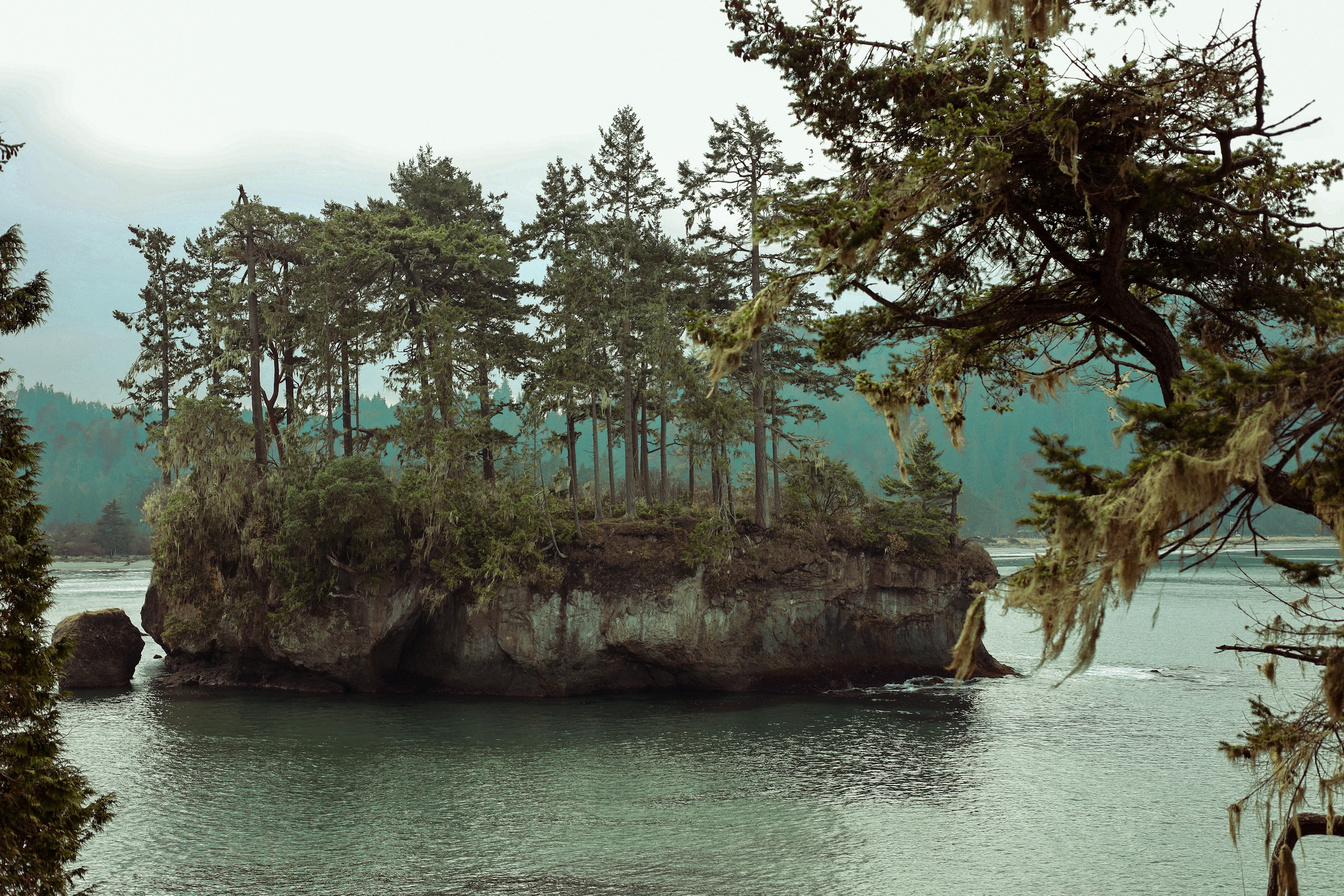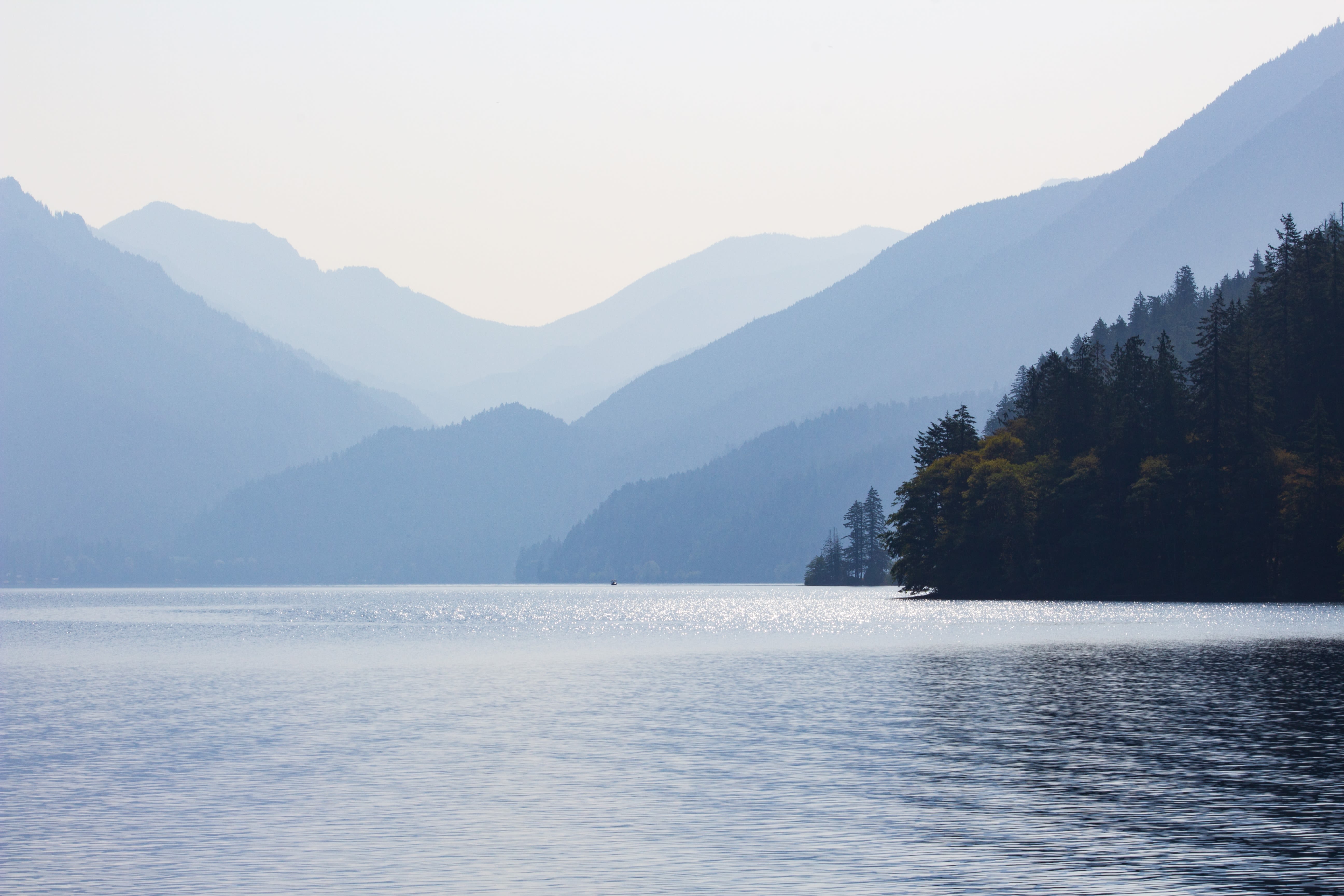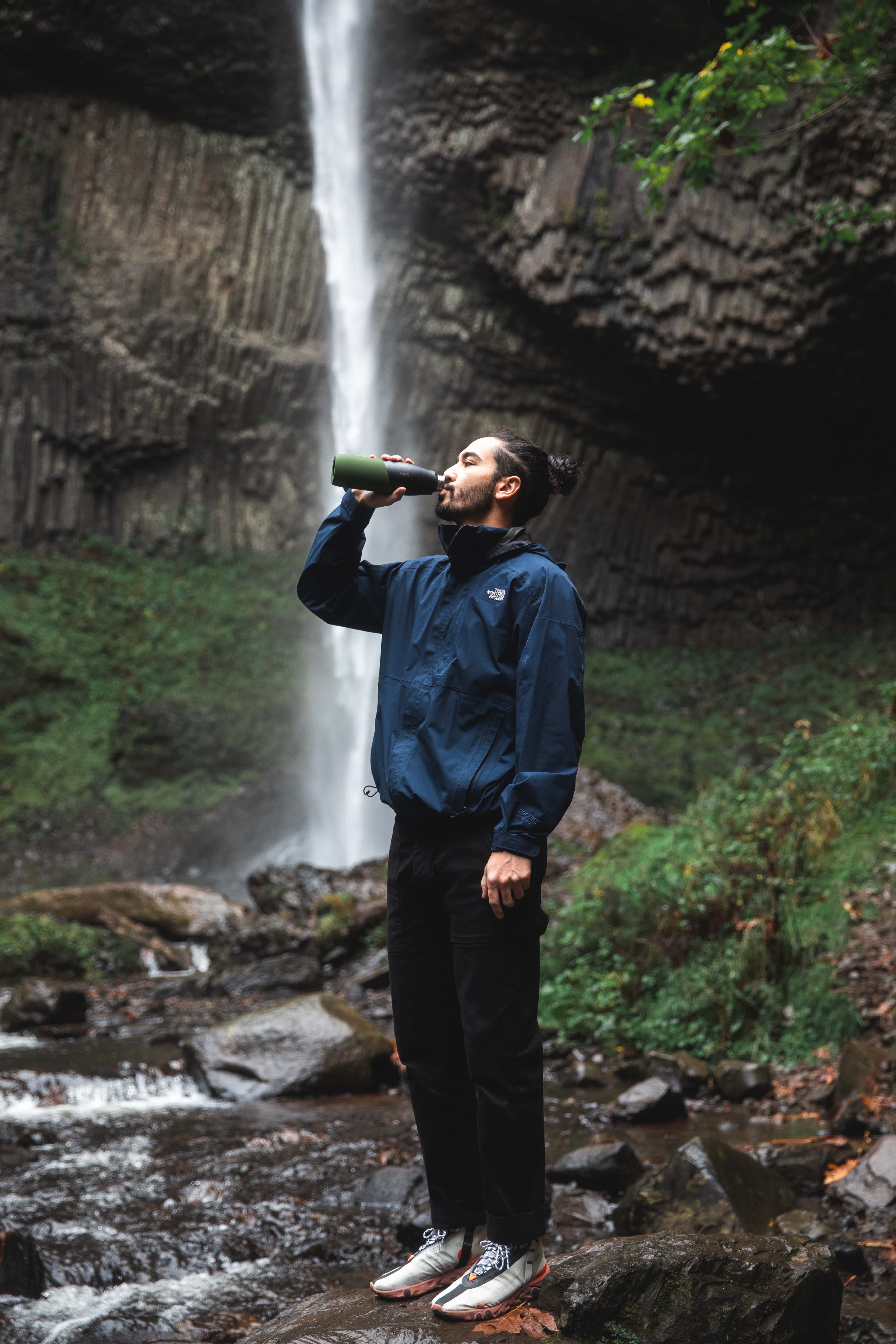Olympic National Park covers 1,442 square miles on the Olympic Peninsula in the northwest region of Washington State. It’s nearly double the size of Great Smoky Mountain National Park, yet it’s far less visited compared to other national parks which means it’s easy to immerse yourself in unspoiled wilderness without the crowds. Landscapes include everything from rugged driftwood-strewn beaches to soaring snow-dusted mountain peaks, lush emerald forests, countless waterfalls, and over 250 glaciers. There’s no shortage of wildlife either, with bald eagles, Roosevelt elk, mountain goats, bears, black-tailed deer, and even ways that migrate along the coast.
This Olympic National Park Guide will tell you all you need to know to help you make the most of your visit.
Where to Stay
- Lake Quinault: Lake Quinault Lodge
- Lake Crescent: Log Cabin Resort or Lake Crescent Lodge
- Olympic Coast: Kalaloch Campground
As the park is so vast, you’ll want to stay in the area you plan to explore the most. The main areas include Lake Quinault, the Olympic Coast, and Lake Crescent/Sol Duc Springs.
Is There Drinking Water in Olympic National Park?
Drinking water is readily available throughout Olympic National Park with water filling stations in all the main areas. If you’re hiking in more remote places, it can be harder to find water, and the streams contain invisible microorganisms that can cause illness. As it’s important to stay hydrated, it’s best to bring a portable filtration system that can remove them along with any other potentially harmful contaminants.
The LARQ Bottle Filtered when used in conjunction with a non-toxic UV LARQ PureVis Cap will ensure your water is safe to drink. The UV delivers a major benefit in those situations when you run out of water on a hike or while taking part in other activities allowing you to treat the water and avoid waterborne illnesses. Be sure to check the official National Park Service website for warnings and other information related to drinking water and water contamination. In some cases, you may even need to avoid treated water.
Top Things to Do in Olympic National Park

Take a Hike
Hiking is one of the top things to do in Olympic National Park with a wealth of day hikes that reveal its crown jewels. Before entering, you can stop by the Olympic National Park Visitor Center in Port Angeles for maps, guides, advice, and more.
There are some short but sweet treks like the 1.5-mile round-trip hike to Marymere Falls which plunges nearly 90 feet into a pool below. Sol Duc Falls, one of the park’s most popular cascades, requires just a 1.6-mile up-and-back hike to marvel at. Hurricane Hill is another favorite in the Hurricane Ridge area. The 3.2-mile round-trip paved trail climbs to a breathtaking panoramic view of the Olympic Mountains and out to the sea. On a clear day, you’ll be able to gaze out at the glistening waters of San Juan de Fuca Strait, the San Juan Islands, and Vancouver Island in British Columbia.
Combine the .8-mile Hall of Mosses Trail with the easy 1.2-mile loop Spruce Nature Trail near the Hoh Rain Forest Visitor Center for an overview of the Hoh Rain Forest, one of the few protected temperate rain forests in the Northern Hemisphere. One of the best hiking trails for a more challenging trek is the 9.4-mile Ozette Triangle Loop. It features the Makah petroglyphs which were etched into the Wedding Rocks that cling to the shore about halfway along the coast. The route follows the shoreline for over three miles, bringing the chance to spot whales and other wildlife like sea otters and sea lions.
Beachcombing
Beachcombing provides the opportunity to discover some unique treasures. Rialto Beach is one of the best and is also renowned for its photogenic sea stacks offshore. It’s covered with gray basalt rock beds and jasper specimens, including orbicular jasper which has red orbs on a black background, helping it to stand out. Agates can often be found here too.
Kalaloch and Ruby beaches are ideal for driftwood, with nearly endless sun-bleached and twisted pieces strewn across the sand, and there’s gorgeous gnarled driftwood on Shi Shi Beach as well.
Soak in Soothing Hot Springs
After a long day of hiking or just exploring in the park, one of the best ways to relax and soothe sore muscles is to soak in the hot springs. You don’t have to spend the night to enjoy the hot mineral pools at Sol Duc Hot Springs Resort. Open from early spring through fall, they range in temperatures from 99 to 104 degrees Fahrenheit. There are multiple facilities here too, including a casual eatery, poolside deli, gift shop, and convenience store.
Water Sports at Lake Crescent and Lake Quinault
Two of the largest and most beautiful lakes in the park are Lake Quinault and Lake Crescent, both of which are popular for swimming in the summer and offer a variety of gear for getting out on the water. Canoes, paddleboards, kayaks, and row boats can be rented from Lake Quinault Lodge. The lodge also offers boat tours like the Sunset Lake Tour for a sunset cruise.
Lake Crescent Lodge on the shores of Lake Crescent offers guided scenic kayak trips along with canoe, kayak, and paddleboat rentals. The adventurous can even leap as far as 50 feet into the 1,000-foot-deep emerald waters at Devil’s Punch Bowl.
Fishing
With 600 lakes, some 4,000 miles of streams and rivers, and over 75 miles of Pacific coastline, Olympic National Park is a fisherman’s, or woman’s, paradise. You won’t need a Washington State Recreational Fishing License in the park and there are over 30 different species of fish, including five species of Pacific salmon, cutthroat, rainbow, steelhead, bull, and dolly varden trout.
Some of the best fishing spots include:
- Bogachiel River – Cutthroat trout, steelhead, and chinook salmon
- Elwha River – Rainbow trout
- Hoh River – Cutthroat, steelhead, and bull trout; chinook and coho salmon
- Queets River – Cutthroat trout, chinook and coho salmon; dolly varden, bull, and steelhead trout.
- Lake Crescent – Cutthroat and rainbow trout
- Seven Lakes Basin (including Morgenroth, Clear, and Sol Duc Lakes) – Cutthroat trout, coho and chinook salmon, dolly varden, bull, and steelhead trout.

Best Time to Visit Olympic National Park
The best time to visit the park depends on your particular interests and what you’d like to do. Most people come during the summer which means it’s the busiest time of year. While it won’t be as crowded as parks like Yosemite or Yellowstone, if you arrive later in the day, there may be a wait to get inside the park, especially at the Hurricane Ridge and Hoh Rain Forest areas. The parking lot at Rialto Beach and Ruby Beach tends to fill early. By arriving before 9 a.m., you can usually find a spot, avoid any lines, and enjoy a more tranquil experience. For pleasant weather without the crowds, consider visiting in May or September.
If you want to take advantage of the slopes at Hurricane Ridge Ski and Snowboard Area, it’s open on weekends from early December through late March.

What to Pack
- Clothing that can be layered
- Waterproof hiking boots
- Water shoes with hard soles for exploring tide pools on the coast (and river/lake swims)
- Bathing suit
- Rain jacket
- Rain pants
- Daypack for hiking
- Sunscreen, sunglasses, and sunhat
- Binoculars for wildlife spotting
- Bug spray to repel mosquitoes
- LARQ Bottle PureVis™
No matter what the weather forecast is, it’s important to pack for wet, cool conditions in the park. It can rain during any season although the sun is likely to come out on any given day during the summer. If you’re coming in the winter to ski or snowboard, pack your typical cold weather clothing for the sport. Otherwise, you’ll want multiple layers made of polar fleece, polypropylene, or wool which will retain insulation even when wet. Avoid cotton which retains moisture.
